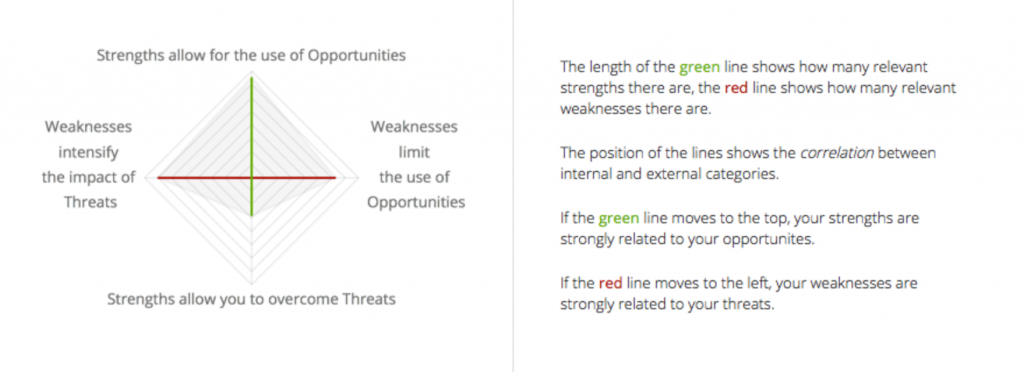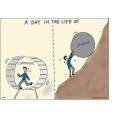Today’s post is intentionally a bit different, and covers a topic near and dear to anyone’s heart: relationships.
Relationships for most of us are among the most important aspects of our lives. At first, we devote a lot of time and energy to look for an appropriate, or even ideal person to share our lives with. Eventually, we get together and very often feel those butterflies in our stomachs. Then, we realize that a relationship requires a lot of attention and effort from us to keep it happy and strong.
We know that nothing in this world is free, and for this reason, we look at relationships as an investment - the more you put in, the more you can get back.
According to a 2010 Pew Research Report 25 % of people are choosing to be single. It is hardly surprising due to results of American Psychological Association research: about 40 to 50% of married couples in the United States eventually divorce. The divorce rate for subsequent marriages is even higher.
So, as a couple for nearly 3 years, newly married and perfectly aware of the perils facing us and these statistics, we are constantly looking for ways to invest more in our relationship. Additionally, we want to make sure that we will not be overwhelmed by daily routines and will still have the strength to stay devoted to each other. We have discussed this topic often, and after elaborating upon dozens of different ideas I finally asked:
- “Why don’t we think outside the box and create a SWOT analysis for our relationship?” - He looked at me with a puzzled expression. Previously we made together several SWOT analyses for different issues, but we had never thought about conducting one for ourselves.
- “Do you think that our relationship has any weaknesses?”, my husband replied, and when he was asking this question the blank expression on his face transformed into a resentful look.
- “Well, for sure I can’t recall any right now, but if there are any issues that can be addressed right away, probably it is better to face them now, before they cause problems later.”
Although we had some doubts about the outcome of this analysis we decided to give this idea a shot.
Step 1: What is the current state of our relationship?
During the weekend we sat down and began to make our SWOT (the process that we followed during our analysis is described in detail here).
First of all, we started wondering what perspective we should do a SWOT analysis from. We could have contrasted being in a relationship with being single, but eventually, we selected an approach based on a time perspective. In the first two categories - Strengths and Weaknesses - we agreed to list only the features that describe the current state of our relationship. The remaining two categories - Opportunities and Threats - would be filled in with situations that might happen to us in the future.
With this in mind we begin to insert our assets and liabilities in the CayenneApps application. At first, it was difficult to find the proper words in which to express our thoughts. We focused on finding our strengths, and as time went on we timidly moved to the weaknesses. Soon our discussion became a brainstorming session and we were surprised at how easily we found values to fit into all four categories. Furthermore, some of the ideas that we brought up were totally unexpected by the other person and gave us an opportunity to see some of these issues through the other person eyes. Below you can see the result of the first step of our analysis.

Generally, collecting information was the most demanding step and took up most of our time. It required us to be open and honest, and frankly, this is not easy, because obviously not many people like to admit that there is a problem and that it might require a change in his/her attitude.
What did this step give us?
- We now have a map of our most important values written down all in one place.
- We know how many things we actually have in common.
- We have discovered what we need to take care of.
Step 2: What are the brightest and darkest sides of our relationship?
The two succeeding steps required us to focus on prioritization. We were asked to define which of our relationship’s strengths, weaknesses, opportunities and threats are the most important for us and what values we would assign to them compared to the others.
This approach is derived from the Pareto Principle which says that roughly 80% of the effects come from 20% of the causes. According to this rule, when we discover and address the biggest obstacles that we face in our relationship, the improvement of our relationship and the satisfaction that comes from it will increase significantly.
Once again, my husband and I discovered that even though we looked at the same sentences, for some of them we had dissimilar opinions about the values that we should assign to them. We needed to explain and understand why something is noticeably more important for another person and then look for a compromise.

We both agreed that small conflicts and arguments in which we are fighting to prove that we are right and not to resolve disagreements are our biggest weak spot. At this point, we were curious what strategy we would arrive at in the end.
Step 3: How does our current behavior affect our future?
Finally, in the last step we needed to answer a couple of vital questions:
- Do the strengths of our relationship help us in taking advantage of opportunities or should we develop other strengths to help keep our marriage in good shape?
- Do our strengths minimize the possibility of the threats (e.g. boredom, daily routine) becoming a reality or should we plan other actions to reduce the risk of threats materializing?
- Do the weaknesses of our relationship limit the possibility of pursuing opportunities (e.g. having children when we argue all the time) and do they need to be eliminated before seizing opportunities? Taking into account a survey of parents which found that 86% had sex less often after having kids, and 73% that said their sex life had definitely taken a turn for the worse after becoming parents, we can assume that we should eliminate our weaknesses before having children.
- Do weaknesses increase the risk of a break-up and should we strengthen our relationship before taking further actions, or is it possible that the weaknesses of our relationship don’t prevent us from feeling good as a couple?
We tried to come up with some common answers, and I suppose it was even easier than in the previous steps. We found it interesting to compare our assets with our possible threats, especially because many of our existing strengths were able to overcome the danger of becoming a miserable couple with a lack of involvement in the relationship and fulfilment from it. Also, while we were performing this step some new ideas for improvement popped up without any effort.

At the end of this step we were dying of curiosity to see what the result of our analysis was. We clicked the “Next” button and waited for the final verdict. In the blink of an eye, the result appeared on the screen: “Aggressive strategy”. Then we read:
You have a lot of strengths, and more importantly these strengths are strongly connected with opportunities existing in the external environment. This is the best possible scenario in which to execute your plans.
Even though we were prepared for any answer, a sigh of relief was heard. We moved to the section that contained more detailed information about our analysis. We discovered that the biggest aspect of our final result was the fact that we support each other and can rely on another person. Surprisingly, this was even more important than the “loving and being loved”.

Moreover, we discovered from the chart which you can see below that we needed to eliminate our weaknesses because they significantly influenced our Opportunities and Threats.

But which of the weaknesses should we eliminate first? The major peril for our relationship came from conflicts and arguments. So, according to the Pareto Principle, if we deal with this issue we should notice a change in our everyday life. The analysis also revealed that even though the support that we provide for each other had the biggest impact on the choice of the strategy, we also had a second, very important asset which we need to pay attention to: shared hobbies. Undoubtedly, spending time together and sharing similar interests can bring us together effectively.

Summary
When we started this analysis, we had a vague idea of what we both consider to be the advantages of our relationship. During this process we had the chance to discuss and collect a common set of values and - what is most important - to learn more about ourselves and our partner. Somehow this time that we spent together made us closer as a couple.
As an outcome, we received invaluable insight for creating a long-term action plan, and the possibility to regularly come back to our analysis and update it according to our current situation. We now feel encouraged to add additional strengths to this list, and to remove weaknesses that we are already aware of. It is a lot harder to avoid changing something when we are conscious of the problem. We are now completely convinced that it is worth overcoming obstacles and thereby feeling fulfilled rather than simply watching threats materialize.
How about you?
Here you can find our SWOT for a relationship that was presented in this post. Feel free to change it or create your own.
In our next post we will write more about defining actions and long term goals. Stay tuned!




